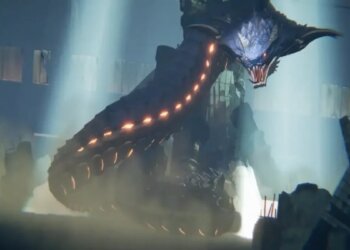Just as the Mythic Dawn would emerge from the shadows to make a dramatic appearance, so too has the remaster of The Elder Scrolls IV: Oblivion stealthily made its debut. And much like the emperor’s assailant, it’s a release that I’m more than willing to embrace with enthusiasm. Oblivion holds a special place in my heart as one of my all-time favorite RPGs, so naturally, I’ve already sunk a good chunk of hours into it once again. In no time, I’ve found myself sealing Oblivion Gates as the protagonist of Kvatch, striking deals with Daedric deities, and battling as an arena champion within the Imperial City. Delving into various faction questlines has been a nostalgia-packed journey, and I must say, this new version’s enhancements have left me quite impressed. Having recently revisited the original game, I’m acutely aware of its past limitations. Therefore, the revamped user interface, fresh voice lines, and notably upgraded graphics make this nearly two-decade-old gem far more accessible than before. Yet, I have encountered some familiarly pesky glitches, such as awkward horse animations, buggy questlines, and occasional frame rate dips. Despite these hiccups, my enjoyment isn’t solely resting on nostalgia—I’m genuinely loving the return to this whimsically strange open-world escapade.
Visual improvements undoubtedly stand out as this remaster’s most significant upgrade. While it might not meet today’s cutting-edge standards, comparing this refreshed version with its 2006 counterpart is quite the revelation. The entire world map now boasts crispness and clarity my teenage self only dreamed of. Enhanced lighting, shadows, and vastly improved character lip-syncing are just a few visual tweaks that leave you pleasantly surprised. However, curiously enough, some aspects didn’t receive the makeover message, like the amusingly grotesque faces of NPCs. Their misshapen features, with a dash of cartoonish bizarreness, might even reflect the true essence of Oblivion. So, while not every Nord or mudcrab appears as visually stunning as you’d expect in a 2025 blockbuster game, it’s still a significant step up. It’s one of those transformations where I find myself nostalgically recalling the game as if it looked this good back in 2006 when it clearly didn’t, underscoring how well the original’s spirit has been preserved.
An unexpected gameplay revelation in Oblivion Remastered is the addition of a sprint function. For those who haven’t revisited Oblivion in years, it might be surprising to remember a time when sprinting wasn’t an option. And if you’ve never played, you can’t quite grasp this newfound blessing from Akatosh himself. Surprisingly, the stamina cost doesn’t even bother me here, something I’m often annoyed by in other RPGs. Though it does bring the peculiar consequence of making the map feel more compact, especially when exploring cities and dungeons at a quicker pace, which now takes roughly half the time. As a result, I’ve become more invested in boosting skills and magical abilities that enhance stamina, given how frequently I’m depleting it. The trade-off is minimal compared to the convenience of breezing through familiar terrains, making the experience significantly less tiresome.
This remaster has ushered in notable UI, skills, and leveling tweaks, alongside a fresh Character Origins feature affecting starting stats. With a modern aesthetic, the updated UI integrates effortlessly, often unnoticed but greatly appreciated. The compass is now perched at the top, offering more handy details, while health, magicka, and stamina indicators are conveniently spread across the display instead of cramped in one corner. Plus, navigating through menus to switch spells or view character stats feels more intuitive. Some old-school quirks linger, like the somewhat disruptive quest log that springs up mid-action with every new milestone, but they haven’t really grated on me just yet. I still need more hands-on time to gauge the impact of the revised leveling and skills system, but I’m cautiously optimistic about these changes.
However, even with Virtuous Games spearheading this remaster, it’s unmistakably a Bethesda creation, complete with its infamous bugs. I’ve already witnessed odd occurrences, such as Oblivion Gates vanishing before my eyes, or NPCs wandering off mid-conversation despite the quest Objective requiring interaction. Admittedly, I was relieved to progress without the log updating, but it could’ve easily become a major frustration. Performance blips on the Xbox Series X, like fleeting frame rate drops when autosaving or during scamp-heavy battles in Kvatch, have also cropped up. Thankfully, most of it has been the standard quirky missteps that haven’t spoiled my adventure—though it’s a bit disheartening that two decades wasn’t enough to entirely iron out such janky quirks in this fantastical universe.
That’s the roundup for now, but stay tuned for the full review in the near future. I intend to complete the main quest, explore the Shivering Isles, and may even go on a Cyrodil-wide spree just to hear those familiar Imperial guard arrest warnings once more. Okay, I’m done now—I think I’ll go catch vampirism or do something equally mischievous. Until next time!









































